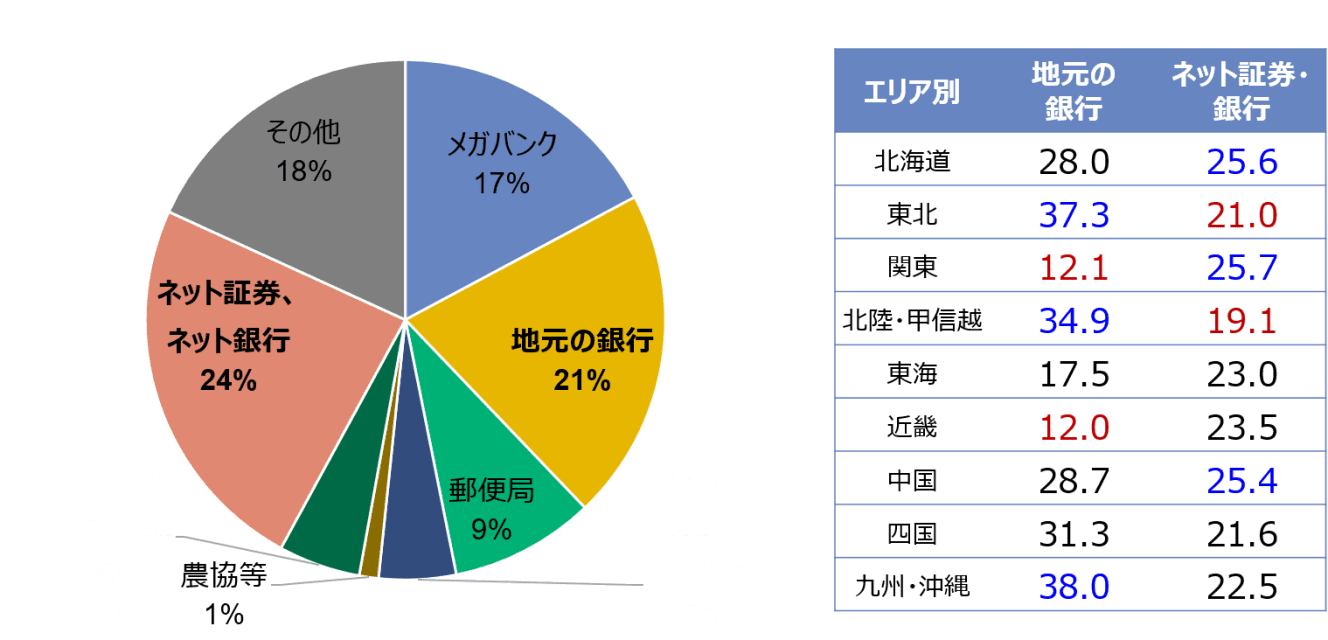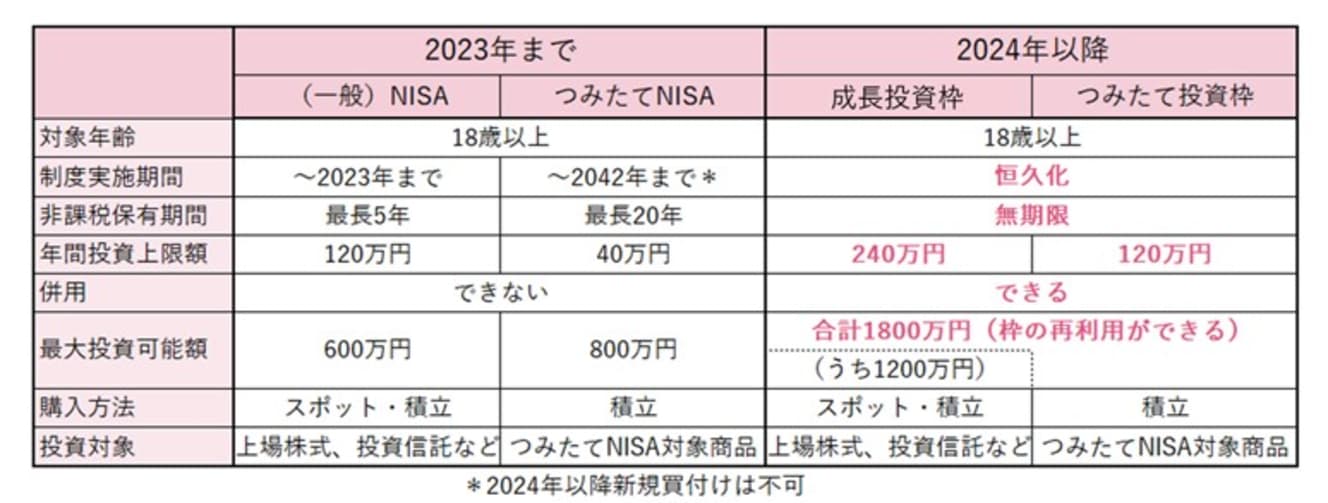Why you should not make changes to your NISA account until October
NISA is the only choice for “Net Securities”!
The new NISA will start in January 2012. Compared to the current NISA, the new NISA will greatly enhance the existing advantages, such as an increase in investment amount and an indefinite tax exemption period. Many people are considering changing their existing NISA accounts at this time. However, one must be careful when changing accounts, as in some cases, if the procedures are not completed before October, the current NISA account will no longer be able to be used for investments during the year. Let’s check the rules for changing accounts again.

NISA 43% of the accounts % are “dormant accounts”!
The official name of NISA is “Small Amount Investment Tax Exemption Program. Normally, profits from stocks and mutual funds are subject to a tax of approximately 20%. However, if you invest in a NISA account, the tax is zero (tax-free). This is an extremely advantageous system. As evidence of this, approximately 18 million accounts have been opened in the nine years since the program started. For a government program, it has been an unusually big hit.
However, the Financial Services Agency’s “Survey on NISA Account Usage” shows that there are many “dormant accounts” that are not in operation . There were 7.74millionNISAaccounts that were never purchased during2010. This accounts for 43%of thetotal.
The most frequently heard reason for the large number of dormant accounts is that “the financial institution where I opened my account did not have the financial products I wanted to invest in. In the case of ” MottoNISA,” which allows investors to accumulate investments in investment trusts, there are nearly200 investment trusts available at online securities companies, while some megabanks and major securities companies have only about10or so. In addition, in the first place, the “GeneralNISA ” at banksdoes not allow investment in stocks.
Financial institutions with NISA accounts can be changed, but the procedures are cumbersome and the rules are complicated. Many people who have tried to make the change may have looked at the procedures and rules, but stopped because they did not understand them well. However, as mentioned at the beginning of this article, the new NISA will be much easier to use starting next year, and will become an indispensable asset management tool for working households. It would be a shame to leave it as a dormant account. Therefore, we would like to reiterate the rules for changing financial institutions for NISA accounts.

Procedures are complicated until September… For those who are “still investing,” the best time to change is from October to December.
The procedures for changingNISAaccounts are very confusing, as each securities company has slightly different procedures and language used to explain them. The biggest source of misunderstanding is the explanation that “a ‘notice of account discontinuance’ or ‘notice of tax-exempt account discontinuance’ is required in order to change financial institutions. This is indicated on the website of any securities company or bank.
First of all, in order to obtain a notice of account discontinuance from the financial institution where the current NISA account is held, a “Notification of Change of Financial Instruments Business Operator, etc.” must be submitted to the current financial institution. However, if you have traded in your NISA account even once since January 2011, the financial institution will not accept the “Notification of Change of Financial Instruments Business Operator, etc.” until the end of September. Some financial institutions do not even allow you to apply for the document.
So, the next step is to submit a “Notification of Abolishment of Tax-Exempt Account” in order to receive a notice of abolishment of tax-exempt account, which is a procedure to abolish your current NISA account. In addition, the NISA account will be closed in 2011. Moreover, those who have transactions in ’23 will not be able to invest in NISA this year after the discontinuation. Furthermore, if you were in a “Tatemono NISA,” you would also give up the maximum 20-year tax-free holding period.
In order to prevent such a situation, you can take the necessary procedures after October, because from October to December, the procedures are switched to the next year’s changeover procedures. If you forget to complete the changeover procedures…
If you forget to change your account, you will have to use your current account in 2024.
However, if you inadvertently forget to complete the procedures by the end of the year and continue to trade in your current NISA account in January 2012, you will have to use your NISA account for the entire year of 2024. If you rush to change your NISA account, you will lose your NISA investment quota, and you will not be able to use your NISA account at the new financial institution until 2013.
The reason why this happens is that the procedure for changing NISA accounts is on a one-year basis. If you are currently investing in a NISA account and wish to continue to do so during this year, but want to use a new NISA account at a new financial institution from 2012, we strongly recommend that you complete the procedures between October and December of this year by submitting a Notification of Change of Financial Instruments Business Operator, etc.
It is safe to assume that it will take two to three weeks to complete the series of change procedures. In addition, your current NISA account will remain after you change financial institutions. Please note that you will not be able to transfer financial products from your current NISA account to a NISA account at a new financial institution.
■Outline of New NISA after January 1, 2024

The sooner you have a “dormant account,” the better.
If you have a dormant account but have not done anything with it in ’23, it is easy to talk about. Basically, no major inconvenience will occur no matter when you make the change. However, for those who did not do anything in ’23 but still have financial products in their accounts, they can either sell them or transfer them to a taxable account if they complete the procedure for discontinuation with a Notification of Discontinuation of Tax-Exempt Account.
If those with dormant accounts complete the changeover procedures by the end of September, they can start investing in their new NISA accounts from September or October. Although there are only three to four months left in the year, the general NISA allows investors to invest up to the annual investment limit of 1.2 million yen.
The longer the investment period, the greater the possibility of gains in asset management, so it is recommended to complete the procedures by September and start investing before the end of the year, if possible.
Again, if you go through the change procedure in October, you will not be able to invest before the end of the year.’ You will start with your new NISA account as soon as the new NISA starts in January 2012. And if you forget to complete the changeover procedure before the end of the year and do it in ’24, you can still invest immediately in the new NISA account as long as you have not traded anything in your existing NISA account.
There are cases where you thought you were dormant, but you were trading.
Dormant account holders should note that there are cases where the account has not become dormant: if you complete the changeover procedure by the end of September, you can invest immediately in your newNISAaccount, provided that you have not traded since January of this year in the account before the changeover. Transactions include not only purchases of stocks and mutual funds, but also sales.
Also, although this will be a rare case, for those who purchased a dividend-distributing type mutual fund before ’22 and have set up automatic reinvestment of dividends, reinvestment of dividends would fall under the category of transactions. If you thought they were dormant, they actually were not. If you have never traded in your NISA account before, there is no problem, but if you have bought mutual funds before, you should check your “transaction report” or other documents.
How to start a “Tamehitate NISA” in the middle of the year and use the maximum limit to the fullest
Lastly, a little secret trick. If you have a dormant account and change your account by the end of September, you can use the full 1.2 million yen investment limit of your regular NISA for the remainder of the year.
The current system allows for an annual investment limit of 400,000 yen, so the maximum amount that can be accumulated per month is 33,333 yen (400,000 yen divided by 12 months). Therefore, if you start in September, you would normally only be able to invest 33,333 yen x 4 months. However, using “Bonus Month Setting” (or Bonus Setting) by Rakuten Securities, SBI Securities, and Monex, Inc. allows you to increase the amount of savings for a specified month.
If October and November are designated as bonus months and the reserve amount is increased to 166,665 yen (33,333 yen x 5 months), the annual investment limit of 400,000 yen can be used up. However, we do not actively recommend this method, since there are only a limited number of financial institutions that offer “bonus setting” and it is not a savings investment. It is only for those who want to use up their investment limit.
For more information on how to choose a financial institution when opening a NISA account, please refer to the following article, “The ‘V+T Point’ Integration Reveals the Skinny on New NISA Customer Acquisition…What You Should Do Before the New NISA Begins”.
Interview and text: Kenji Matsuoka
After working as a money writer, financial planner, and market analyst for a securities company, Matsuoka became independent in 1996. He writes articles on finance and asset management mainly for business and economic magazines. Author of "A Textbook for the First Year of Robo-Advisor Investing" and "Understanding with Rich Illustrations! Cashless Payments for the Absolute Benefit of Cashless Payments".